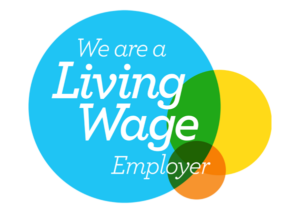Ant Moir - Head of Business Development
ant.moir@nuttall.co.uk - Sustainability - March 17 2022.
‘ESG’, ‘circularity’, ‘net zero’ – these are buzzwords that are ricocheting across the commercial world this year. No more so than in retail, which sits right at the sharp end when it comes to adapting to changing consumer preferences. The evolution of their shopping habits shape global trends in demand, and a rapidly growing demand from consumers is for more sustainable retailers.
No green-washing allowed
The shift towards sustainability can no longer be a lip-service activity – customers simply can’t and won’t stomach corporate green-washing. It’s time for businesses like ours – who work hand-in-glove with some of the UK’s (and the world’s) best-loved retailers – to go ‘beyond design’ on the road to net zero and put sustainable thinking right at the heart of our clientele’s business models.
The short-sighted manufacturing model of ‘make-use-discard’ simply isn’t acceptable for many switched-on shoppers, which means that suppliers to retail are challenging themselves to design greener solutions – and we’re more than happy to be playing our part.
Changes that run to the heart of our business model
Our own sustainability journey gained momentum when we embarked on our rebrand in 2020. Detailed research with our own loyal customer base highlighted that our sustainability approach needed to be much more than just a story, but a core driver of our business model. Since then, we’ve seen dramatic increases in environmental regulations hitting our market. We know our customers are now coming under increasing formal compliance pressures, in addition to their consumers’ expressed preferences.
We know from experience that 80% of the environmental impact of a project will be determined at the briefing and design stage, so this is where we apply our know-how to minimise environmental impacts up-front. We combine our experience and expertise in visual design and value engineering to reduce impact and regenerate resources at the ideation phase, right through into supply, production and installation.
Whether it’s the inclusion of hand-made, organic or sustainably sourced elements, our team are able to ‘design in’ more sustainable fixtures, fitting and materials. In addition to the selection of materials, considerations around local production or blended solutions that utilise our global supply chain can mitigate the carbon footprint associated with elements or all of a specification to be fulfilled.
Going further on circularity and sustainability
But we can go much, much further for customers wanting to explore circularity in more depth. Our Refurb and Refresh projects look to reuse, recycle and upcycle within retail transformations. In doing so, we avoid sending decommissioned components to land-fill wherever possible, thus optimising total carbon savings.
An example of our refurb and refresh approach was for M&S – a customer who is assertively pushing their sustainability agenda. Our project was to refurb and refresh their cafe in White City London, whilst maximising carbon savings when high footfall within the café space had left damaged fittings in need of redesign and re-enforcement.
Our focus enabled:
- Cosmetic upgrades delivered in an ‘on-brand’ format
- Reuse of as much of the existing furniture as possible
- Use of sustainably sourced substrates to improve overall life expectancy of the fit-out
- All works to be carried out on-site, overnight with zero store disruption
Designing for lower carbon solutions
Where entirely new concepts are required, we take a holistic view of the ‘total cost of ownership’, considering direct and indirect costs as well as environmental impacts. For design thinking that goes way beyond the visual impact and includes the overall customer experience, production and material choices are essential. But it is our design emphasis on modular and scalable solutions, that require limited parts and offer improved economies of scale across our manufacturing, that create most sustainability opportunities.
Critical design decisions also impact how easy concepts are to install, which directly impacts time on-site. Well-designed, modular, flat-packed components reduce packaging requirements as well as transportation and storage costs.
As the requirement for sustainable solutions intensifies, we can always be trusted to consider how a concept can be updated from one generation to the next, by designing and developing solutions that will lend themselves to reuse. The potential for cost savings provided by working this way are enormous, but the potential for positive environmental impact is even more significant.
Our PRISM process helps us to ask the critical questions at each and every stage in the project lifecycle, enabling our teams to partner with customers to reduce their carbon impact, provide an end-to-end service, minimise store disruption and reduce overall impact. Essentially, we’re developing an approach for end-to-end sustainability, with the flexibility, breadth and depth to be all you need.

















